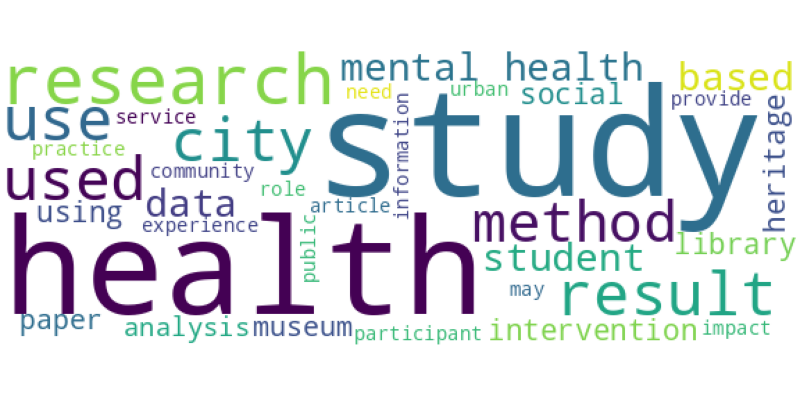| Id | 2402 | |
| Author | Shickh S.; Oldfield L.E.; Clausen M.; Mighton C.; Sebastian A.; Calvo A.; Baxter N.N.; Dawson L.; Penney L.S.; Foulkes W.; Basik M.; Sun S.; Schrader K.A.; Regier D.A.; Karsan A.; Pollett A.; Pugh T.J.; Kim R.H.; Bombard Y. | |
| Title | “Game Changer”: Health Professionals’ Views on the Clinical Utility of Circulating Tumor DNA Testing in Hereditary Cancer Syndrome Management | |
| Reference | Shickh S.; Oldfield L.E.; Clausen M.; Mighton C.; Sebastian A.; Calvo A.; Baxter N.N.; Dawson L.; Penney L.S.; Foulkes W.; Basik M.; Sun S.; Schrader K.A.; Regier D.A.; Karsan A.; Pollett A.; Pugh T.J.; Kim R.H.; Bombard Y. “Game Changer”: Health Professionals’ Views on the Clinical Utility of Circulating Tumor DNA Testing in Hereditary Cancer Syndrome Management,Oncologist 27 5 |
|
| Link to article | https://www.scopus.com/inward/record.uri?eid=2-s2.0-85130001757&doi=10.1093%2foncolo%2foyac039&partnerID=40&md5=0c6b087484f75545d51f185ddcf6ad88 |
|
| Abstract | Background: We explored health professionals’ views on the utility of circulating tumor DNA (ctDNA) testing in hereditary cancer syndrome (HCS) management. Materials and Methods: A qualitative interpretive description study was conducted, using semi-structured interviews with professionals across Canada.Thematic analysis employing constant comparison was used for analysis. 2 investigators coded each transcript. Differences were reconciled through discussion and the codebook was modified as new codes and themes emerged from the data. Results: Thirty-five professionals participated and included genetic counselors (n = 12), geneticists (n = 9), oncologists (n = 4), family doctors (n = 3), lab directors and scientists (n = 3), a health-system decision maker, a surgeon, a pathologist, and a nurse. Professionals described ctDNA as “transformative” and a “game-changer”. However, they were divided on its use in HCS management, with some being optimistic (optimists) while others were hesitant (pessimists). Differences were driven by views on 3 factors: (1) clinical utility, (2) ctDNA’s role in cancer screening, and (3) ctDNA’s invasiveness. Optimists anticipated ctDNA testing would have clinical utility for HCS patients, its role would be akin to a diagnostic test and would be less invasive than standard screening (eg imaging). Pessimistic participants felt ctDNA testing would add limited utility; it would effectively be another screening test in the pathway, likely triggering additional investigations downstream, thereby increasing invasiveness. Conclusions: Providers anticipated ctDNA testing will transform early cancer detection for HCS families. However, the contrasting positions on ctDNA’s role in the care pathway raise potential practice variations, highlighting a need to develop evidence to support clinical implementation and guidelines to standardize adoption. © The Author(s) 2022. Published by Oxford University Press. |
|
| Keywords | Circulating Tumor DNA; Early Detection of Cancer; Health Personnel; Humans; Neoplastic Syndromes, Hereditary; Qualitative Research; BRCA1 protein; BRCA2 protein; circulating tumor DNA; circulating tumor DNA; anxiety; Article; cancer patient; cancer screening; clinical article; clinical decision making; clinical trial; cohort analysis; controlled study; diagnostic test; early cancer; early cancer diagnosis; female; follow up; gene mutation; genetic counseling; health practitioner; hereditary tumor syndrome; human; male; nuclear magnetic resonance imaging; ovary cancer; pancreas cancer; qualitative research; screening test; semi structured interview; tumor invasion; genetics; health care personnel; procedures |
Wordcloud:



